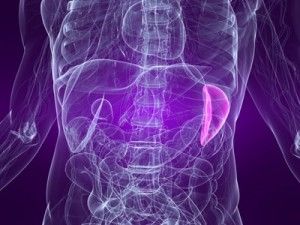Spleen Surgery & Splenectomy
 The spleen aids the body in its fight against germs and infection, and by filtering your blood. It is located in the upper left side of your abdomen. Common medical problems include:
The spleen aids the body in its fight against germs and infection, and by filtering your blood. It is located in the upper left side of your abdomen. Common medical problems include:
- Hypersplenism when the spleen is overactive
- A spleen cyst or abscess
- Spleen tumors or spleen cancer
- Spleen blood vessels are blocked by a clot
- Blood cell diseases
- Sickle cell anemia
- Leukemia
- Lymphoma
- Hodgkin’s disease
Symptoms can include an enlarged spleen, abnormal blood cell counts, or pain on the left side or shoulder. In certain diseases, the spleen is normal size.
Spleen Surgery
When the spleen is diseased or damaged and cannot be treated with non-surgical treatments, then the spleen is removed through surgery (splenectomy). Spleen surgery is done under general anesthesia so the patient cannot feel any pain and is asleep during surgery. Spleen surgery can be performed with open surgery, or less-invasive laparoscopic spleen surgery.
Open spleen surgery
An incision is made in the middle or left side of the belly below your ribs and the spleen is removed. The surgeon may inspect and remove other areas of your body that could be affected by your condition, such as cancerous lymph nodes.
Laparoscopic spleen surgery
The majority of non-traumatic splenectomies (spleen removal) are performed with a minimally invasive technique (laparoscopy). Several small incisions are made in your belly. A laparoscope (telescope) is inserted and the spleen is removed from the patient’s left upper quadrant. Because the incisions are smaller than open surgery, a shorter hospital stay and quicker recovery are typical for most patients.
Getting Back to Normal
- Patients usually leave the hospital after spleen surgery within a few days after open surgery. It is usually an overnight visit when done laparoscopically.
- You will receive immunizations for the various bacteria that can cause a problem after spleen removal.
- Lifting restrictions will be limited to 2 weeks for laparoscopic procedures and 4 weeks for the open technique.
